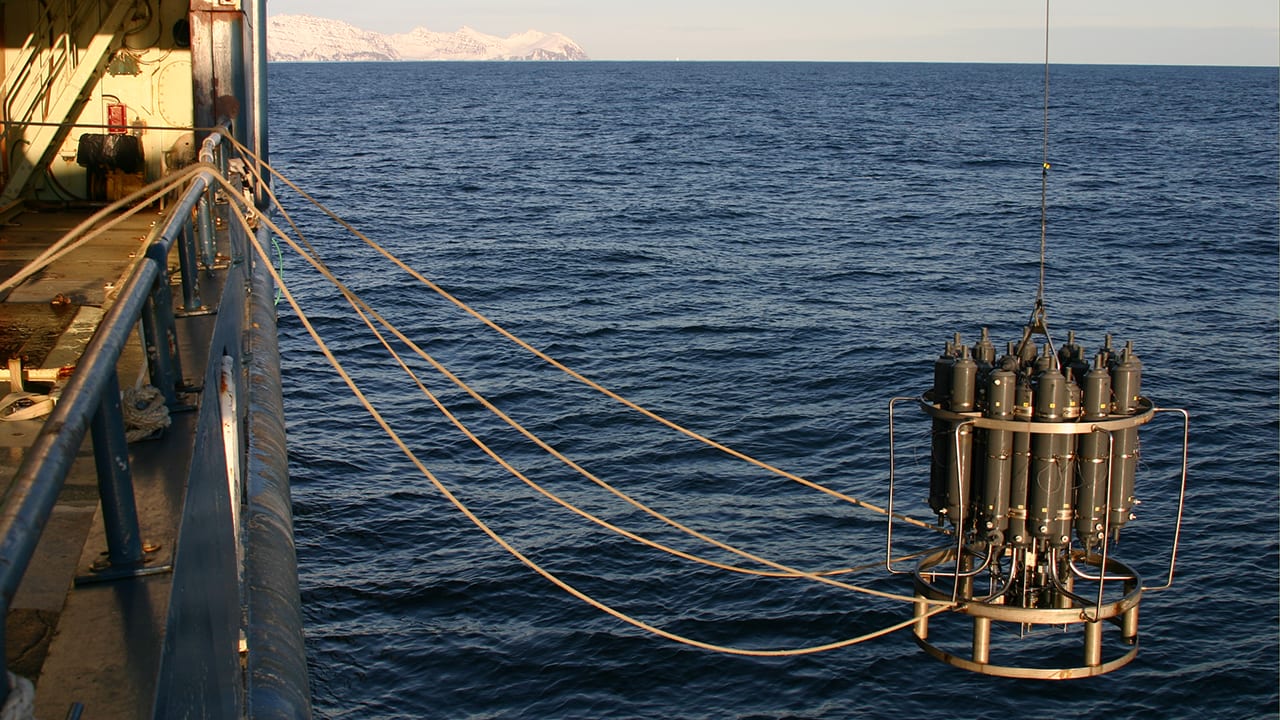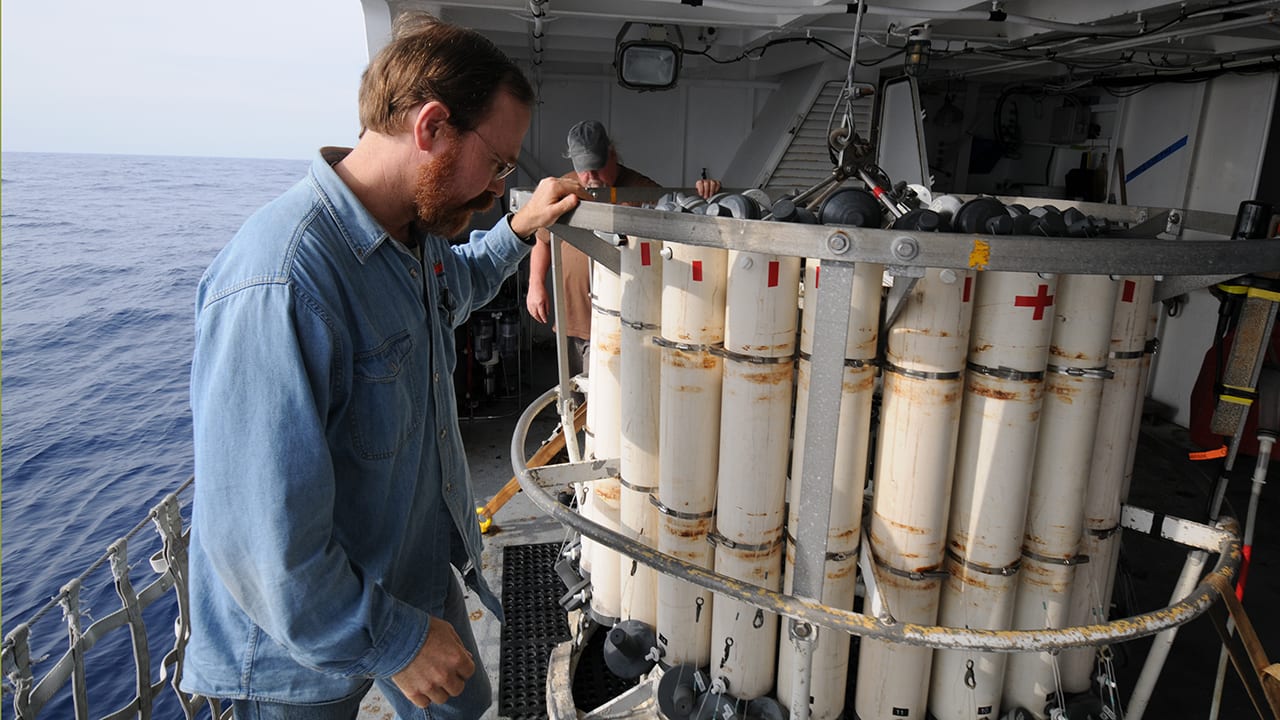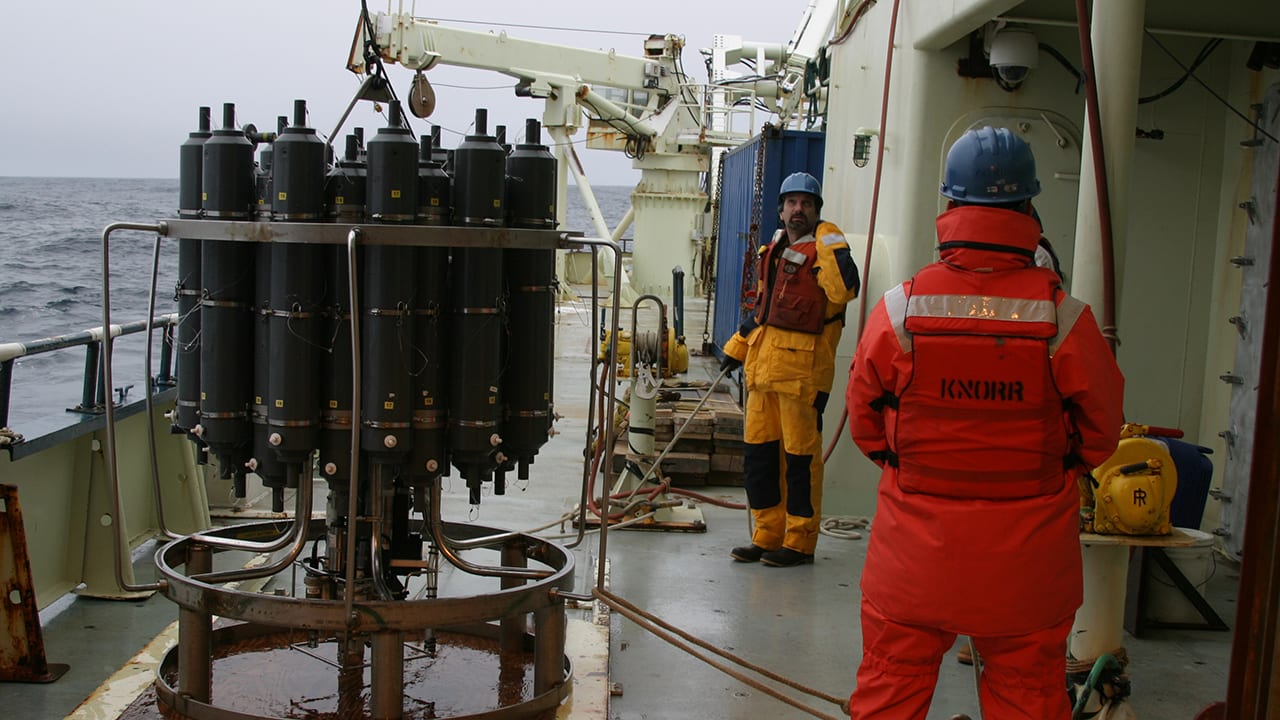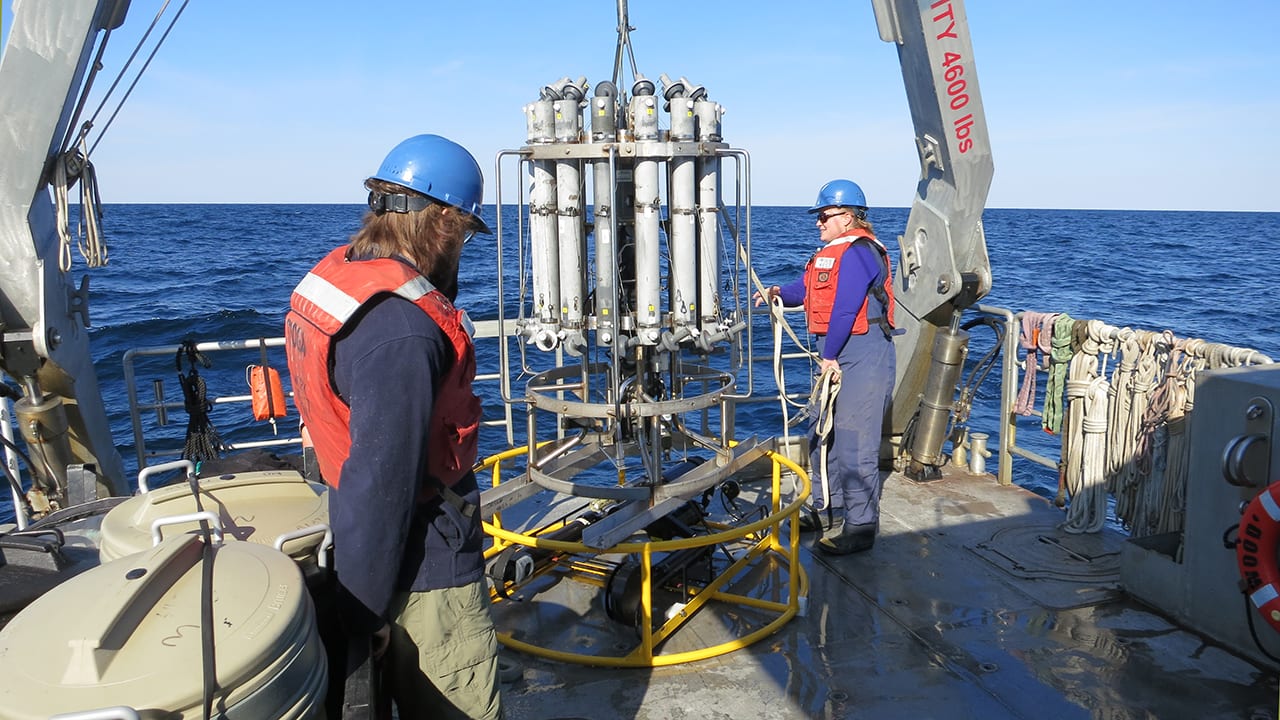Rosette Sampler
General Information
Water sampling devices range from a bucket dropped over the side of a small boat to large water bottles sent toward the deep ocean seafloor on a wire. Probably the most commonly used water sampler is known as a rosette. It is a framework with 12 to 36 sampling bottles (typically ranging from 1.2- to 30-liter capacity) clustered around a central cylinder, where a CTD or other sensor package can be attached.
Technical Information
Advantages:
Relatively simple to use (rosette only)
Disadvantages:
Heavy to transport/deploy
May be very fragile
Deployment Gear/Constraints
Heavy gauge winch wire
High capacity boat
Further Information
Introductory text modified from: University-National Oceanographic Laboratory System (UNOLS), The Research Fleet, edited by Vicky Cullen; Moss Landing Marine Laboratories, Moss Landing, CA; 2000.




